What Are the Differences Between Coins and Rounds?
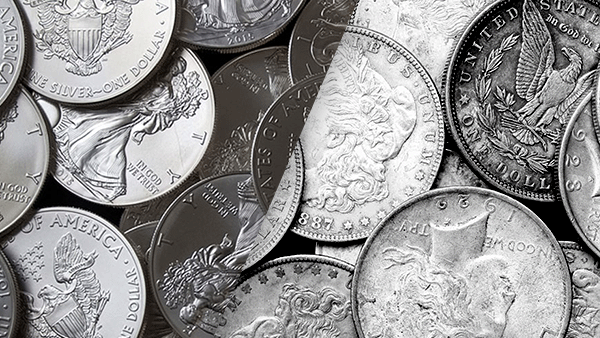
INTRODUCTION
Precious metals have been a valuable investment for centuries, and their popularity has only grown in recent years. As a precious metals investor or collector, one question that appears relatively often is, "Should I buy rounds or coins?".
Coins and rounds are two of the most common forms of investment in the precious metals market, but they have significant differences that can affect their value and suitability as an investment. This article will explore the key differences between the two and help you make informed decisions about your investment strategy.
DEFINITION OF COINS AND ROUNDS
Rounds and coins are both forms of bullion that are made from precious metals such as gold, silver, platinum, or palladium. They are minted by government or private mints and are valued based mainly on their weight and purity.
Coins are legal tender issued by government mints and are characterized by (1) having a face value and (2) a legal tender status, meaning it is recognized as a currency by the government that issued them, although they may not be common circulating currency. Although coins have an official face value, their value is based more on the value of the metal content. A coin is often considered an investment piece rather than a collectible with any notable condition, rarity, or mintage.
Unlike coins, rounds are privately minted bullion that look similar to coins, but do not have a face value and are not legal tender. Rounds are valued based solely on their weight and pureness and are often used as a more affordable alternative to coins.
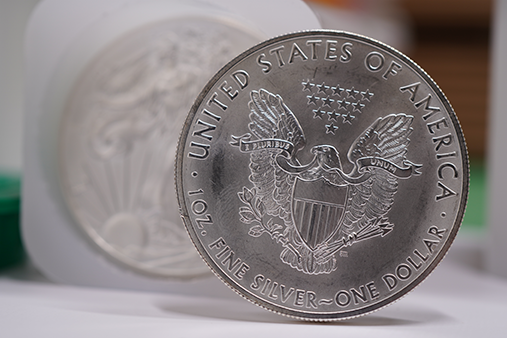
HISTORY OF COINS AND ROUNDS
Gold and silver coins have been used as money for thousands of years, with the first coins being minted in Lydia, a kingdom located in modern-day western Turkey, around the 7th century BCE. Today, coins are still produced by government mints (also known as sovereign mints) worldwide, and many have become highly collectible for many investors due to their historical and commemorative significance.
Rounds, on the other hand, are a relatively recent development in the precious metals market, with the first rounds being minted by Johnson Matthey, a British company in the 1970s. Private mints produce rounds for investment purposes. They offer a popular strategy for investors to acquire precious metals as a form of bullion and are not subject to the same premiums as coins, making them a more cost-effective alternative than government-issued coins.
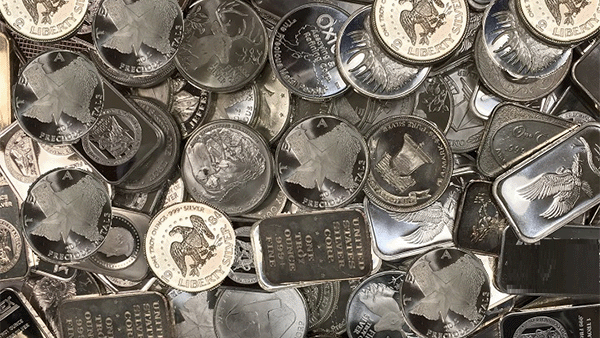
The many designs a silver round can have
DIFFERENCES IN DESIGN AND MINTING
While coins and rounds are both made from precious metals, there are different aspects that can affect their value:
Face Value
Coins are assigned a face value, which is a fixed monetary value that can range from 1-50, coined by a government or central bank. The coins, however, tend to have a higher price than their face value because the value of the coin's precious metal content is more valuable than its actual face value.
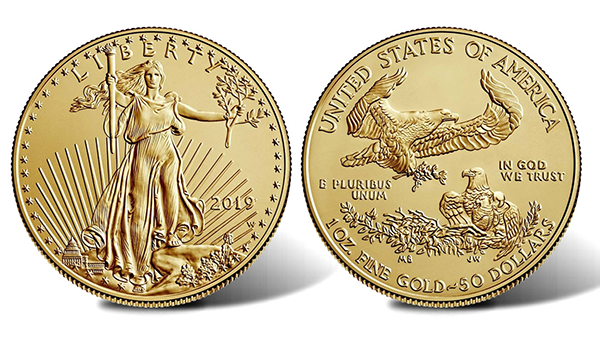
For example, a one-ounce American Gold Eagle coin has an assigned face value of $50, this face value will always remain $50 but the coin's actual value is determined by the current market price of gold and the rarity of the coin. As of Feb 2019, the market price of gold is over $1,300 per ounce, which is much higher than the immutable $50 face value of the coin. This difference between values also applies to the silver coin. Understanding the difference between the nominal value and the actual value of a coin is important when investing in gold and silver coins, which is why investors should focus on the metal content, pureness & rareness of a coin, instead of the face value.
Moreover, the face value holds little meaning, other than signifying legal tender status, given that the coin's metal value has greatly surpassed it.
Rounds, on the other hand, do not have a face value and are mainly valued based on their weight and purity. Rounds are often more affordable than coins because they are not legal tender and do not have the historical or commemorative significance of coins.
Weight And Purity
Coins are often produced in a variety of sizes and weights, ranging from a fraction of a troy ounce to several troy ounces. The weight and purity of coins are typically guaranteed by the government mint that produces them. These government mints are spread all over the world from the United States Mint to the Perth Mint in Australia.
The weight of gold coins typically ranges between 1/10 oz (3.11 grams), to 1 oz (31.1 grams), whereas silver coins can go up to 10 oz (311 grams) coins and even 1 kg coins (35.27 oz.).
Conversely, rounds are typically produced in standard sizes, such as one ounce or ten ounces, and their weight and purity depend on the reliability and reputation of the private mint that produces them. It is common to find silver rounds of the same type with varying dimensions and weights.
Private mints are owned by private companies and operate independently from the national government. Examples of private mints are Silver Towne Mint, Sunshine Mint, Golden State Mint and Asahi Refining.
Silver coins and silver rounds are typically minted to 99.9% fineness, while gold coins and gold rounds are usually minted to 99.99% fineness. However, some coins, like the 1 oz American Gold Eagle coins, are minted to 91.6% purity. They still contain 1 oz of gold; it is just that more other metals have been added to harden the coin.
Legal Tender Status
Coins are legal tender issued by government mints and can be used as currency, hence to pay debt and taxes, in the country of issue. This means that they have a guaranteed value (the face value), which can provide some measure of stability during times of economic uncertainty.
Rounds are not legal tender and do not have a guaranteed value. Their value is determined by the market price of the precious metal or bullion value and rarity.
Mintage And Rarity
The value of investment-grade bullion coins and rounds is usually based on their gold or silver content. They are often mass-produced for investors' purchase and are not considered rare collectibles. For example, the 2018 American Silver Eagle 1 oz coin has a 15.7 million mintage while the 2014 Canadian Maple Leaf silver coin had a 29 million mintage.
However, some coins with limited mintage and special historical significance can be highly prized by collectors due to their history. They are considered numismatic coins - a type of coin that is valued primarily for its rarity, historical significance, beauty, and collectability rather than its intrinsic metal value. For instance, in mint condition, coins like the 1804 Draped Bust Dollar or the 1907 Ultra High Relief Double Eagle go for multiple millions today. However, only a handful of coins are valued at this high level.
Rounds, however, can be produced in much larger quantities, and they often do not have the historical significance of coins. This can make them a more affordable option for investors who are primarily interested in the value of the precious metal they contain. Rounds also have unique models that can be worth multiple thousands of dollars.
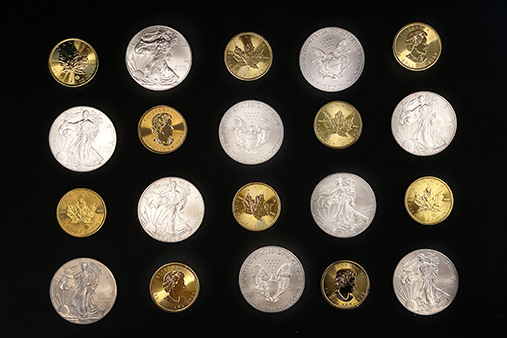
DIFFERENCES IN COST
Coins and rounds also differ in terms of cost. While both are made from precious metals, they can differ significantly in terms of premiums, sales tax, and resale value.
Premiums
A premium defines the price a client pays over the spot price, or current market price of the precious metal, which covers the overhead cost of manufacturing, storing, shipping, etc.
Numismatic coins issued by government mints are often minted in limited quantities and may have unique designs or historical significance, which can make them highly sought after by collectors. The legal tender status, official government backing, collector value, rarity, condition, and historical significance all impact the numismatic coins' premium. The premiums for numismatic rare coins can vary widely and, in some cases, reach several multiples of the coin's metal value.
While bullion coins are also produced by government mints, they are mass-produced for investment purposes and are a popular choice for investors seeking the guarantee of quality in the coins' weight and purity. The premiums of gold coins lie around 2-10%, whereas silver coins will have a premium of anywhere around 10-40%.
On the other hand, rounds are typically valued based on their weight and purity and are often produced in larger quantities than coins. While some rounds may have unique designs or limited editions, silver rounds carry lower premiums in general due to their deficit of legal tender status and numismatic value association. The premium for gold rounds lies around 1-5% and the premium for silver rounds ranges between 5-20%.
Sales Tax & Capital Gains Tax
Coins and rounds can also differ in terms of sales tax and capital gains tax depending on where you live. In the US for instance, few states do not charge sales tax on precious metals (including gold and silver bars, coins, rounds, etc.). However, most states charge not only a sales tax that varies between 4-7% but also charge capital gains tax which can vary from 10%-37%, depending on your income level and how long you held these metals.
In Singapore, however, where we at Silver Bullion operate, bullion coins considered Investment Precious Metal are exempted from the sales tax when buying gold and silver bullion, and there is no capital gains tax (CGT)sales taxes when selling the coins in Singapore, meaning the profit you make is completely tax-free. However, the sales tax will apply when investors buy a gold or silver round.
UK residents can enjoy a Capital Gains Tax (CGT) exemption on bullion coins issued by The Royal Mint since they hold the status of legal British currency. This favorable treatment extends to all gold, silver, and platinum bullion coins produced by The Royal Mint, including the well-known gold and silver Britannia coins, Sovereigns, and the popular Queen's Beasts range. This CGT exemption means that investors have the opportunity to generate tax-free profits without any limitations on bullion coins from The Royal Mint.
Resale Value
Coins and rounds can also differ in terms of resale value. Bullion gold and silver coins are sold around the world and are highly recognizable to global investors, making them highly liquid with excellent resale value.
Numismatic coins, while more valuable to collectors due to their historical or commemorative significance, can realize their highest value only when sold to other collectors, a subset of the global investor market.
On the contrary, rounds may be more valuable to investors in certain countries like the United States, where they are more common. Given that rounds are often taxable in many countries, this can dissuade investors from buying them, preferring coins over rounds. Nevertheless, rounds are still an excellent way to accumulate precious metals.
CONCLUSION
Ultimately, the choice between bullion rounds and bullion coins depends on individual preferences, budget, and investment goals. Both forms provide a means to invest in precious metals, but the differences in design, pricing, and recognition can impact their desirability and potential resale value. By understanding these differences between coins and rounds, investors can make informed decisions and are generally prepared to buy silver coins and rounds.
Regardless of one's choice, gold and silver have historically been safe haven assets in high demand and excellent assets to protect from financial and currency crises.
FAQS
1. Can rounds be used as currency?
No, rounds do not have a face value and are not legal tender, so they cannot be used as currency.
2. Why do coins have higher premiums than rounds?
Coins have higher premiums than rounds due to their legal tender status and historical or commemorative significance. This can make them more valuable to customers and can increase their resale value, hence the premium is higher.
3. Are coins more valuable than rounds?
Not necessarily. The value of coins and rounds depends on several factors, such as their weight, purity, mintage, rarity, and condition. Coins may be more valuable to collectors due to their legal tender status, official government backing, collector value, and historical significance. Rounds on the other hand may be more valuable to investors who are primarily interested in the value of the precious metal they contain.
4. Which is a better investment, coins or rounds?
It depends on your investment goals and preferences. Coins may be a better investment if you are interested in the historical value of the coin, or if you want the stability of legal tender. Rounds may be a better investment if you are primarily interested in the value of the precious metal they contain, or if you want a more affordable option with lower premiums.
5. Can I buy precious metals directly from a mint?
Yes, many government and private mints sell precious metals directly to investors. This can be a convenient way to purchase bullion without going through a dealer.
